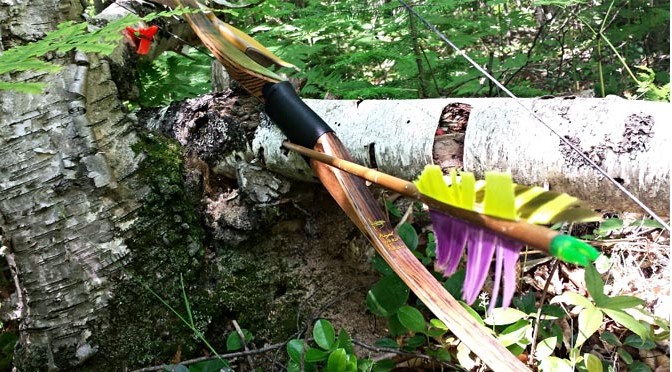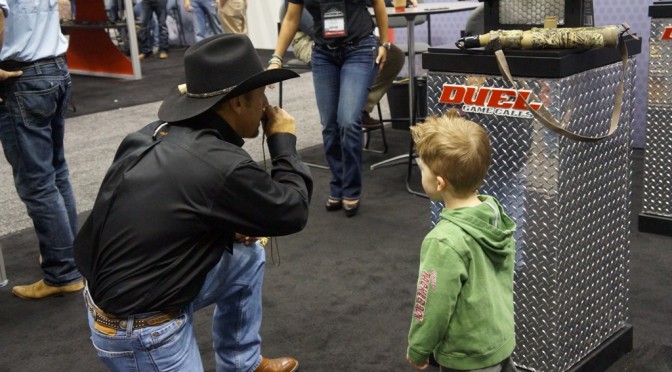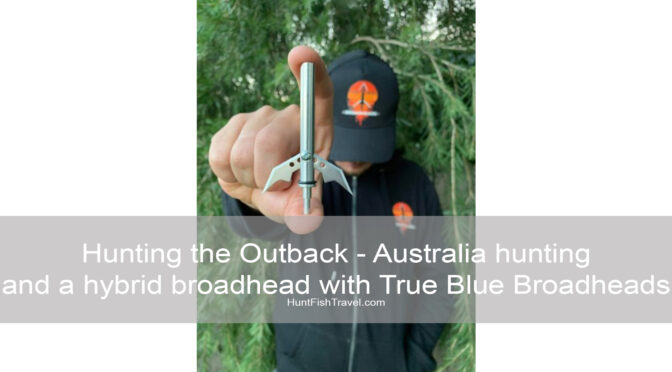We’ve discussed locations and blind types in our previous segments. Obviously, both are important but having good cover in the perfect spot is useless if you don’t do the right things once inside. Knowing what you can get away with in regards to movement is paramount to having success from the ground.
If you’re going to build a blind, you have to know how to use it to your advantage. You have to know how to interact with it and believe me when I tell you that it is the little things that make the difference. I’ve made my share of discoveries in the form of mistakes and am hoping the list below will save a few of you from tasting tag soup should you wish to hunt from natural cover in the future.

1.) Wool clothing is king. I would wear patterned wool on every hunting trip if I could. It doesn’t reflect light and it isn’t an abrasive fabric. Fleece is also fantastic, but I’ve read multiple articles about fleece and UV light and would prefer wool to special detergent. I find it is better for controlling scent as well. I keep all of my wool stored in a plastic bin with earth and pine wafers when not in use and hang it outside in the wind before a hunt. it is also warmer than any fabric I’ve encountered, especially when wet. There is a reason our hunting forefathers wore it and who am I to argue with decades of results?
2.) Get a comfortable seat. I cannot stress this enough. If you can’t sit for long periods of time without constantly shifting around due to discomfort, you won’t have a chance at anything four-legged. I’m not going to bother making suggestions regarding brands because at 6’4″ 240 pounds what is uncomfortable for me may not be for you. No one seat gets the job done for me either. I have two different seats I use – a hammock-style that hangs from a tree and a cheap folding chair with a backrest. The latter gets real noisy in the cold and has static bar-style legs, which isn’t conducive to most terrain. The hammock is great in most situations, but requires a fairly straight tree to be comfortable. The fact it requires a tree is inhibiting a bit too. I’ve hunted out of expensive swivel seats and tree saddles as well. All are great options, but not the only option. There isn’t a seat on the market that works well in every situation. When you find one that works for you, but it and don’t be afraid to modify it as necessary. Making things work for you is part of the fun. I always carry an extra wool vest into the woods to pad my seat for instance. I also make sure the moving parts of my seats are lubricated so they don’t squeak.
3.) Bring toe warmers, hand warmers, and cough drops. All three of these are possibles bag necessities as far as I’m concerned. I realize I hunt in Michigan most of the time, but the ground is cold in the morning and the evening no matter where you are. Sitting perfectly still while exposed to the elements will chill you. The cough drops help with having a dry throat and needing to cough. I’ve heard that deer can smell them and are wary of them, but I’ve seen too many deer at 10 yards or less with a cough drop in my cheek. It hasn’t affected my hunting yet.

4.) Wear a facemask, face paint, and a brimmed hat. An uncovered face looks like a bicycle tire reflector to me. Take a photo of yourself in the woods sometime if you don’t believe me. Cover that mug up or hide it in the shadow of a hat. There is no point in going to the trouble of breaking up your outline if you don’t hide your face. It would behoove you to where a hat with a brim if you wear glasses as well. Contacts bother me in the woods. They get cloudy and make me want to itch my eyes. I also have a really hard time putting them in early in the morning without feeling like someone dumped peroxide in my eye sockets. I’m forced to wear glasses as a result and will not go into the woods without my favorite hat
5.) Limit your movement. Think about the times you’ve spotted game in the wild. What gave it away? What was it that you saw? Movement. The same principle applies to us, only we’re up against critters that spend their lives being alert. We are but guests in the woods and will never notice things that are out of place as much as the wild things we hunt. Move painfully slow and try not to fidget. Use your peripheral vision and keep head movement to a minimum. This gets harder to do when it gets cold or when you get bored, so consider leaving the woods or changing your surroundings when you start to slip.

6.) Maintain your cover. Natural cover requires maintenance or it wouldn’t be “natural”. Make sure the ground at your feet is clear of noisy leaves and debris and dress your blind with fresh foliage when necessary
7.) Remove your bow quiver (if you use one) and keep your arrows out of site. During my first season afield, I was caught reaching for my bow by a mature 8-point and still haven’t gotten over it. My bow has been in my lap and ready to shoot ever since. I highly suggest you try the same. Ditching your bulky bowquiver will help you and will

decrease your chances of being spotted in addition. Strap-on quivers create more surface area for game to see when it comes time to draw. Bright fletching is easy to spot in the woods and can turn your bow into a big, white flag of surrender.
8.) Limit phone usage. I’m as guilty of this as anyone. Long sits can be boring and messaging friends can keep you in the hunt. I love sharing my adventures, but have noticed I’m less alert once my phone has left my pocket. Deer are hard enough to see without splitting your attention between the woods and your cell. Consider the excessive head movement as well. Not to mention the shiny, reflective, glowing screen. All are dead giveaways.
9) Understand that vision will be limited. This is yet another reason to advocate for the point above. Most natural cover blinds are in ambush spots that put you within ten yards of game with a very small window of time in which to shoot. Your shooting opportunities will usually come and go quickly. Be ready for anything.
10) Get up, get out, and stretch. This may be heresy to some, but I’m not an advocate for sitting in one spot all day without a break. I can’t do it. I get bored and my mind wanders. I’m also a big guy and my circulation isn’t great. There is no seat on the market that is comfortable enough to spend the day in. The longer you sit, the sloppier you’ll be.
Well that concludes my natural cover segments. I hope you have enjoyed them as much as I have writing them. Nothing I’ve said is rocket science and it is all perfectly debatable based on your situation. However, if one tip leads at least one of you to success in the woods with a traditional bow, I am a happy man. I’d also love to hear about it. Feel free to share your tips and stories in the comment section below.
Until next time!
Nick recently became the President of the Michigan Longbow Association (www.michiganlongbow.org) and has become a lot busier as a result. He’ll continue to contribute as a Wild One, but less frequently. If you have a topic you would like Nick to cover, please let me know!
Thanks for reading! If you enjoyed this post please share it with the world!
Don’t forget you can read more articles from Nick Viau’s blog “A Traditional Viau” here and don’t forget to like us on Facebook.
If you’d like to get immediate email notifications when a new article, contest or show is posted; enter your email address in the sign up box on the left.
You can also learn more about the traditional bowhunting experience at his personal site Life and Longbows.
Discover more from The HuntFishTravel Show
Subscribe to get the latest posts sent to your email.



